Blog
Fake Plants
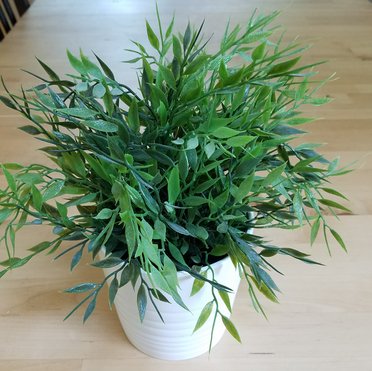
I love the look of indoor plants. But they hate me.
I have killed their friends. Not from malice. Just neglect .
Gifts of potted flowers shrivveled up when they came to live with me. Cute little herb gardens would hang in a few days before dying. I even killed 'foliage' plants that everyone says you can't kill.
Maybe it’s because I’m used to children and pets. They let you know when they need something. But plants are stuck in one spot and suffer silently.
I considered dried flower arrangements but they seemed brittle and dead and a little creepy.
Then I discovered IKEA fake plants. IKEA has the greatest fake plants ever – nice and green and spiffy. They don’t actually resemble any real plants,either. They just look good. And green.
The Committee
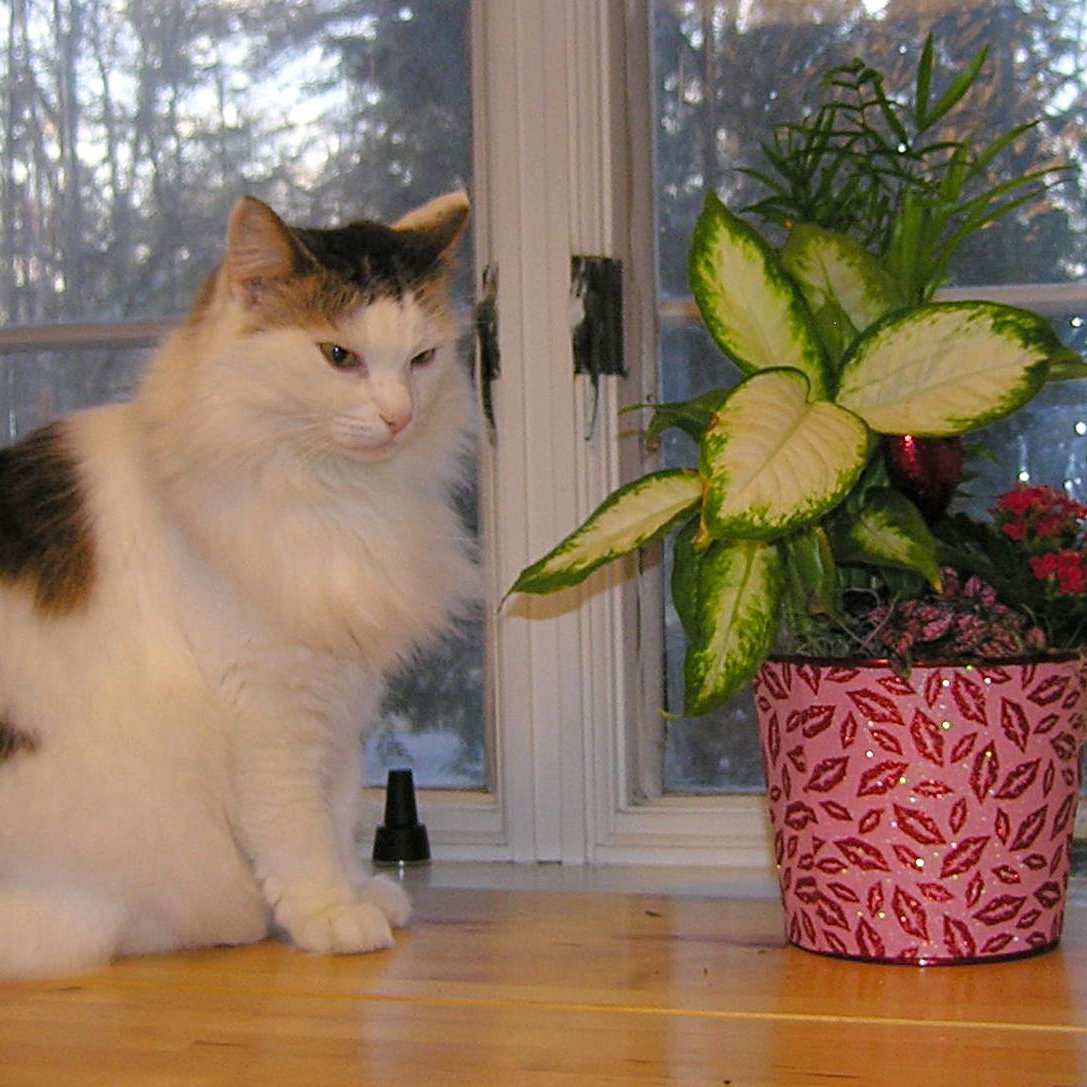
We have a new addition to our household. A plant. Or rather a collection of them nestled in a pot together.
I'm trying my best to keep them alive.
This plant makes me vaguely uneasy. Plastic ones are just objects, to be arranged at my whim. But a real plant is fragile and sensitive. I worry that it’s judging me as inadequate. That it knows my houseplant history. I worry that I have some bad plant karma.
As a child, I hated the family yard. On sunny weekends, the whole family would go outside and mow, rake and water with religious zeal. Grubs were the enemy. There were brown patches that had to be thatched with a rake. I couldn’t wait to go back inside, away from this hot, impossible task. The yard was all about endless work.
My uneasy relationship with the outdoors has continued throughout my life. But recently, I’ve had a change in perspective, thanks to al little book called
The One-Straw Revolution written by a Japanese rice farmer.
It's not really about farming but about people.. Where do we fit into the world of growing things? The author makes the claim that farming (which is way beyond yardwork) doesn’t have to be about endless struggle. He calls his method “do nothing” farming. “Nature can do the work that we have unnecessarily taken upon ourselves”.
The message is that maybe we shouldn't be interfering so much with the way things are going outdoors. And that we don't have a clue what we are really doing.
Hmmmm. In the meantime, it’s been 2 weeks since the Committee arrived and they are still alive!
Deer

Last spring, I was thrilled to find two baby deer nibbling my yard. They were white with brown spots and looked fragile and elegant.
How amazing to see these forest creatures in my neighborhood, This would never have happened when I lived in the city.
After a recent snowfall, I found a parade of hoof prints in the snow. There were all different sizes. I imagined the herd with a huge stag as the leader, followed by gentle does with little Bambis tagging along. How magical - these beautiful animals with their little white tails, pointy ears, big brown eyes, and silvery antlers gleaming in the moonlight.
Well, the snow melted. As I walked outside, I noticed something puzzling. The ground was covered with little brown pellets.
What could they be?
Chocolate covered peanuts spilled by a passing child? Nuts from a tree? Oddly shaped seed pods?
No - deer droppings.
And not just a few. There were mounds, clumps and swaths of droppings, as if a giant hand had strewn them across the yard like sprinkles on a cupcake.
But why did the deer use my yard as a rest stop? I leaned that the culprit was the ground cover: “purple wintercreeper”. It's everywhere and according to the experts, it's deer Doritos.
My yard is an all-night free deer buffet, with a nice bathroom.
I’ve had to rethink my romantic image. I’m still thrilled to have deer wandering about my neighborhood, but the magical picture is tarnished. Maybe deer aren’t as dainty as I like to imagine. All night, bushels of purple wintercreeper going in one end, and digested purple wintercreeper coming out the other. In the moonlight.
Avocado

I just ate a whole avocado. I only meant to eat half, but it was so good and they are better fresh. Unfortunately, I forgot to take a photo before I ate it.But that’s no problem – I went to the Internet and found this picture on “californiaavocado.com”.
There were lots of recipes, too. I got so distracted looking up “chocolate avocado bread” that I nearly forgot what I was going to write about
Being very fond of avocados, I find it astounding that what looks like a dinosaur egg contains such silky green yumminess. The one I just ate had a label stuck to the mottled skin: “Mission, ripe when soft, product of Mexico”.
This little guy obviously had a long history before it reached my kitchen. I don’t know who set it on top of the avocado pyramid in the grocery store, who unloaded it from the truck, who drove the truck all the way from Mexico to Ohio, or who plucked it off a tree.
I can imagine each of these events because they were performed by people and I’m a person.
But the event before the picking is something I cannot imagine. I could use this avocado in all sorts of ways, but I couldn’t make one. There is something mysterious and magical behind the forming of an avocado. Growing from the inside out, this round leathery object seems to appears out of nowhere.
The interior is hidden until it is opened with a knife to reveal something that has never been seen before. A green geode.
To try and understand this mystery, I pulled out my daughter’s college biology book. As I flipped through this three-inch-thick monument to knowledge, I came across the chapter on photosynthesis. OMG – page after page of crazy, gaudy cartoonish pictures of little things happening in the Tinyverse.
My eyes glazed over and I closed the book.I felt that if I spent enough time delving into the labyrinth of these diagrams, I could eventually store them in my memory.
But would I really understand how my avocado came to be? That mysterious process that brings something from nothing?
The Vulture Tree

Does it strike you as odd that in the middle of a suburban neighborhood there would be a Holiday Inn for vultures?
It’s not a building, but a large sycamore tree. Every evening as the sun goes down, a flock of vultures arrives, each one wheeling out of the sky on enormous black scalloped wings to land on the high branches.
It takes them a while to settle down for the night. As soon as one lands, another will take off and soar around for a while before coming in for a landing again.
Why do they touch down and then fly off like this over and over? Are they unhappy with their branch mates? Are they trying to decide if they are tired enough to go to bed? Is this some kind of ritual that helps them get comfortable, the way cats turn around on the chair before taking a nap?
Often, several will land on a neighboring pine tree. Are these the teenagers trying to stay up late? “How about a little privacy, please?”
Occasionally, one will land on a rooftop and do the vulture walk. Bobbing along like a zombie pigeon, there is nothing clumsier than a vulture on two feet. But when that same bird takes to the air, there is nothing more graceful.
As they flap their wings and cluck back and forth, high in their treetop, I have the impression of ongoing conversations. “Was that the best road kill ever?” “Move over – I’m falling off the branch” “Shut up and go to sleep”
Finally, the light is nearly gone and everyone has found a proper perch. Wings are folded, heads are tucked under wings, and the flock is settled in for the night. IMy friend, the Advocate for Unpopular Animals, identified them as turkey vultures. Unlike other raptor species, vultures are sociable, which explains why they gather for these large slumber parties.
But it’s still curious that they have chosen this particular tree. Out of all the other trees in the area, what makes this one their favorite? I hope it’s not because they are waiting for one of the elderly residents to keel over and become food. I would like to think that they enjoy the presence of people down below, the occasional car passing by and the glimmer of street lights.
More likely, they just got a deal with their frequent flyer miles.
Exuberant

Now that winter is over, all sorts of green things are shooting up in my yard.
The lawn, which I once assumed was full of grass is actually a miniature jungle. Different leafy characters are appearing every day.
Some I recognize, like clover and dandelions, and some are mysterious. Many are very small, tucked under larger leaves, quiet invaders lurking out of sight
One thing they all share is an urge to grow.
We have a weekly lawn service. On Wednesdays, a rumble can be heard in the neighborhood, getting closer and louder as the afternoon approaches. Around 1pm the truck arrives on my street, carrying a huge red monster engine of destruction.
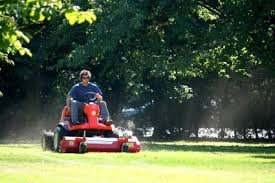
A young man with headphones drives it down from the trailer, wheels it across the street and begins tearing through my yard. I cringe inside my house as a horrid buzzing, ripping growl, like a herd of furious, mechanical buffalo beats against the windows.
The peace of the day is shattered. When it’s over, all growth has been thoroughly subdued. In minutes, the tall waving fronds are reduced to short green stubble.
Shock and awe.
Total annihilation.
It’s a regularly scheduled natural disaster. Yet very soon, the jungle begins to recover. The green onions raise their spears, the dandelions unfurl their yellow banners, and even the grass starts to grow again.
As I live through this drama, week after week, I am becoming aware of some immense force beneath the ground. An endless creativity that produces green life. Over and over again, as waves of destruction are followed by even greater waves of fabulous and spectacular growth.
Like a fearless political dissident, the lawn re-emerges to climb towards the sun.
Breakfast

I just finished cleaning up the breakfast dishes. What an experience!
First, I picked up the greasy spatula and put it into my black granite composite sink (which was made-in-some-far-away-place), then I turned on the shiny “brushed nickel” faucet (also made-in-some-far-away-place), and hot water arrived through a white pvc pipe (yes, made-in-some-far-away-place) from my basement water heater (MISFAP!).
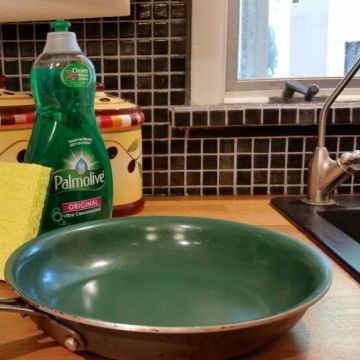
Then, I washed the ceramic coated frying pan (MISFAP), with a plastic sponge (MISFAP). The clear plastic detergent bottle (MISFAP) bore a label with the names of two plants, the palm and the olive. The green liquid inside (MISFAP) bore no resemblance to either

Then, I tossed a piece of plastic wrap (MISFAP) into the trash. This little scrap was of such a gossamer consistency that it weighed practically nothing, yet was as clear as glass and both strong and stretchy. I can’t imagine the crazy advanced technology used to produce what I so casually discarded.
When I opened the refrigerator (MISFAP), a light came on and cold air greeted me, way colder than the air I was standing in. Behind the door, small machines and computer chips were toiling away. An array of cold white objects and devices (all MISFAP) promised to maintain the chill.
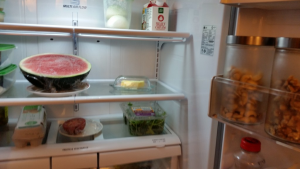
After setting the butter dish back on a shelf, I wondered about the cow that produced the butter. Did she have a personality? Did she have a story? Did she get to live outside under the sun? I hoped she did.
I stepped across the kitchen floor and felt the cool tiles under my feet. I wondered about the mountain in India where the granite came from, how it had been formed over eons, deep underground, then sliced into perfect squares for me to walk on.
My kitchen contains substances that are so altered from their original form as to be completely unrecognizable.
All came from far, far away and were produced by the labor of countless anonymous bodies and minds in fabulous and unknowable ways.
But there was one element of the morning that was different.
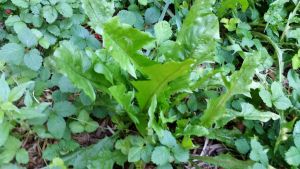
Dandelions.
Every morning when the weather is warm, I collect dandelion leaves from the yard. Dandelions grow all over but the best ones are in a little patch right outside the back door.
I have a sense that each plant s a little creature, aware of the sun, the other plants that crowd around, the nibbling rabbits, and of me as well. I try to nip off only a few leaves from each plant.
Inside, I chop them up and add them to the frying pan.
Then while the morning sun shines on the (MISFAP) kitchen, I enjoy this small representative from my own back yard.
It’s an amazing experience! Now, if I could only find some coffee beans out there.
Yard Salad
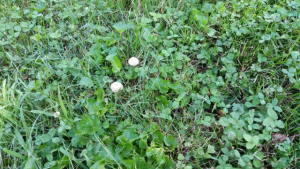
What if your entire yard was planted with salad greens? And all you had to do was walk outside and pick a bowl whenever you liked?
It seems like that’s the case in my yard. I have recently discovered that most of the “weeds” in my yard are actually edible, and surprisingly tasty. So I've been making yard salad.In just a few minutes, here’s what I was able to harvest: dandelions, wild violets, creeping Charlie, wood sorrel, mugwort, lambs quarters, garlic mustard, grape leaves, purslane, and plantain seeds.
After I picked the weeds for my yard salad this afternoon, I looked in the refrigerator and found a plastic container of organic arugula, which I added to the mix. The label said it came from California. I imagined seeds being planted in a field, tended, watered, fertilized, hopefully not sprayed, picked, apparently washed three times, dried and stuffed into a plastic box, sealed up, loaded into a refrigerated truck, driven thousands of miles to Ohio, unloaded at the grocery store, set inside a well-lit produce bin, tossed into a shopping cart, zapped with a laser beam at the checkout counter, packed into a plastic bag and driven down the road to end up in my refrigerator.
Whew!
That’s a lot of action for 4 ounces of arugula.
Sharing a bowl with them, their foraged neighbors were not so coddled or well-traveled. The yard greens had been planted by Nature, and certainly not tended, fertilized or sprayed. They had to depend on rain for their water.
Until I picked them, they lived outside in the yard. The only washing they got was a quick rinse in the colander.. After being chopped and splashed with olive oil and vinegar, all of these greens tasted great, but the yard weeds apparently have the nutritional edge. According to the multitude of websites on the subject of foraging and eating weeds, wild munchies have all sorts of benefits not found in their cultivated cousins.
Bur for me, the best reason for making a yard salad is to be reminded that there really is a free lunch. Thanks for lunch, Weeds!
Hospital

I recently spent some time in a hospital. (I keep typing 'hostipal'.) Since I wasn't the patient, I took the opportunity to explore the grounds.
I tried to go for a walk. But the parking lot was for cars, not people. The autumn trees were meant to be seen through glass. Inside, there was an attractive lobby with stone and tile and earthy patterns. But the only evidence of plant life were the photos on the walls. Closeups of leaves and water droplets, all behind glass.
I did find some real plants in the cafeteria, safely quarantined in large metal bowls.
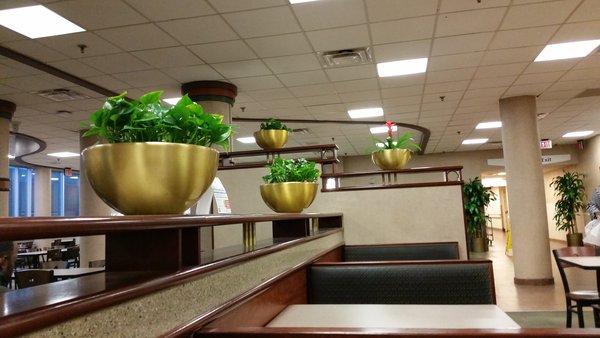
In my brief time in the hospital universe, I sensed that plants were not only irrelevant but slightly dangerous. The hospital was all about the suspicion of organic life. It was very clean and full of busy, well-meaning people, wearing over-laundered uniforms and carrying medical doodads. Bright, hard, shiny, sterile, blinking, clicking, beeping, metal and plastic. Hospital. Hostipal. Hostile.
Acorn Brownies
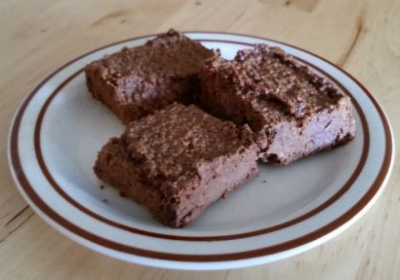
Yes, acorn brownies. The idea came from a book:
Oak: The Frame of Civilization
I learned that acorns were THE FOOD in a lot of ancient societies. Forget wheat - it was 'Give us this day our daily acorns'.
There were many good stories in the book, but the part about the acorns really made an impression. The author was impressed, too. He even managed to scrounge up some acorn flour from a Chinese grocery and made pancakes.
I decided I had to try this. It was fall and acorns were everywhere, just lying on the ground. It didn't take long to collect a bunch. A few whacks with a hammer was all it took to crack the outer shell. The nut meats went into the blender with some water and voila!I had ground up acorns in water...
The next step was a problem - rinsing out all the bitterness. Which is important since these acorns were UNBELIEVABLY bitter. Somehow squirrels don't seem to mind this. Fortunately, the internet has lots of techniques. I tried most of them, with the exception of hanging the ground-up acorns in a cloth bag in the toilet tank or in a river for a few weeks.
It seemed that the easiest method was to pour the whole mess into a big jar, add some baking soda, and stash the jar in the back of the refrigerator for a few days. The nut pieces would sink to the bottom and the water would sit on the top. After rinsing and repeating over and over, the water finally cleared and I could actually nibble on a nut without making a face.
That's when I realized that with the bitterness gone, acorns are totally bland. Like walnuts with NO flavor. But after all that work, there's no way I was giving up. So what could I do with a bunch of damp, tasteless acorns?
Brownies!!!
Here's what I did: I got out a big bowl. I cracked 2 eggs into about a cup of damp acorn meal. I stirred this up. Then I added a can o pumkin, half a cup of Hershey's' cocoa, half a cup of maple syrump, a tablespoon of vanilla, a pinch of pink salt and half a dark chocolate bar.
Everything went into a 13 x 11 inch pan, lined with parchment, and baked at 350 for 30 minutes.
When I took out the pan it was brown with some more browning on top. It cooled off a bit.
To my surprise, the brownies were actually pretty good.
According to Scientific American (May 2014) “Balanophagy—the practice of eating acorns, has played an important part in the diets of many cultures around the world.”
Unlike grain cultivation, balanophagy is much less labor intensive and requires no weeding, plowing or fertilizer. In addition, trees provide a variety of other benefits including filtering rainwater, providing shade, preventing erosion, mitigating diseases, and generally creating a “halo of improved health around them” (The Man Who Planted Trees by Jim Robbins).
The Temple of Fine Dining
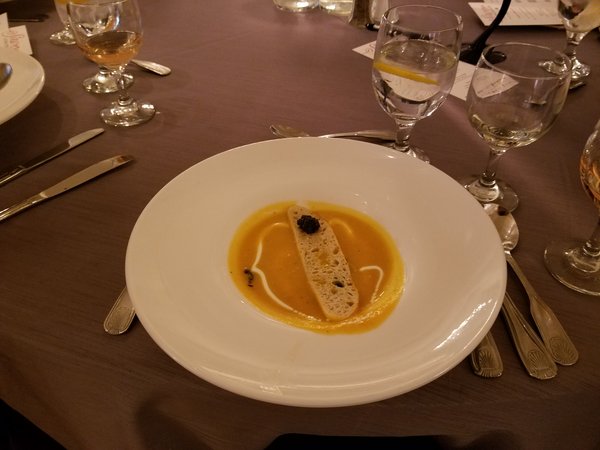
This all started with a coupon. A restaurant coupon for $50.
It came in a ritzy magazine. (I know it's a ritzy magazine because of all the advertisements for plastic surgeons.)
In the past, my dining adventures have been limited to Mexican restaurants in strip shopping centers. And as a child, eating out was a a trip to McDonald's once a year.
I have no experience with fine dining. But.... the coupon was for my birthday, so why not give it a try.
My daughter was all on board with this, so off we went, dressed in our best, to the Fancy Restaurant .....
After letting the valet park our car we entered the dimly lit sanctuary, where we were lead past a wall of chilled wine bottles to our reserved seats. I felt small and poorly prepared. Should I have studied up on the subject? It looked way more complicated than I had assumed.
A man in a uniform jacket showed up at our table. That was already intimidating, but he also had an accent - vaguely eastern European. He brandished menus and began a long prayer (I mean description) of the various dishes this restaurant offered. There was something very important about "dry aging" the beef, which came in varieties such as "porterhouse", "NY strip", and "filet mignon". I pretended to comprehend, as the realization of my utter inadequacies became more and more apparent.
My knowledge of beef was that it came from a male version of a cow. My cooking experience was with the ground variety which didn't seem as connected to an animal.
We acted as if we needed to consult with each other over the menu, and the uniformed man slinked off. OMG, I said, did you see the prices? What is the difference between a porterhouse and a NY strip and a filet mignon?
She didn't know either, having grown up on hamburgers and tacos.
We decided they must all be about the same because they were all seriously EXPENSIVE. I kept thinking how much ground beef I could buy for a single entree, but hey, we had a coupon!
The man in uniform showed up again, this time with an i-pad that displayed the cocktail menu. I considered ordering one but 1 - they were EXPENSIVE, 2 - they were made with things like tequila and vodka - yuck! and 3 - a single sip would mush up my brain so much that I would probably order something even more EXPENSIVE.
Fighting a huge up-welling of inadequacy and humiliation, I asked if we could split the "dry aged NY strip" entree. And, no, we didn't need a side dish, since we had already ordered the fried calamari appetizer, and there was a basket of fancy bread, too, and a giant slab of butter.
Was the uniformed man ok with our order? What was his position anyway? Who were these other people in white aprons filling up our water glasses?
I felt as if I was in a temple to the cult of Fine Dining, with various priests and functionaries dressed in their religious garments. The table was an altar, with all the items set about just so, forks and glasses and plates, all upon a pure white cloth.
The two of us had entered this establishment to participate in the "service". A third functionary arrived, a woman in a brown uniform. She carried two pure white plates, with a little chunk of brown meat upon each. This must be the $45 "dry aged NY strip", since I had no idea what to expect, maybe something with a large bone?
It felt like this was a sort of ceremony. Since were were preparing to eat the body of an animal that was killed for this purpose, maybe it was proper that there should be a religious element to this event.
But this cult was focused on the preparation of the food, not the source. All the credit was being given to the process of "dry aging" and grilling, and not a single word was mentioned about the real source, the poor animal who had munched grass and flicked flies sometime in the past.
It was as if the raw material for this magical act of preparation had just come out of nowhere.
We nibbled our meat, which tasted like meat. It was tender. We were both puzzled about why this was so appallingly expensive. We were looking forward to getting out of this place.
But not so fast - since it was my birthday, our man in uniform came back with two thin fluted glasses of champagne with a large red raspberry in each one. Then another plate arrived, with two little round dessert objects and the words "Happy Birthday" written in chocolate in the middle.
This was just lovely, and quite unexpected, so we took photos before we got around to eating them.
Then, the ceremony was over and it was time to pass the plate and take up the offering, which in our case was the coupon and my comforting green American Express card.
The priest whisked off our contribution and we waited while the magical numbers were calculated. Kept wondering how far our $50 coupon would go. When he returned, we were relieved that our coupon had done it's own magic, and the American Express did the rest.
There were no hymns to usher us out of the temple, but the valet ran out into the parking lot and retrieved our car so that we could return to the real world.
All the way home we talked about the weirdness of "fine dining". Perhaps if we had been familiar with the way the ceremony worked, we wouldn't have been so intimidated. After all, lots of people do this all the time and seem to love it.
But to us, it was as if everyone we encountered could see a glowing neon sign on our heads that said "this person is clueless". The order of service, the prayer and the liturgy were completely unfamiliar. We were like Buddhists at an Episcopal church service for the first time.
Nothing made any sense. How did the process of eating food take on the trappings of a religious cult?
Save the Food

Walking about my neighborhood, I spot food growing everywhere.
Purslane poking up out of the cracks in the pavement, stands of lambs quarters next to a fence, broadleaf plantain among the grass, and even a grove of mugwort stalks. I often carry a bag for gleaning.
The best times are after it rains and all the plants are washed. But sometimes, I find a scend of destruction - dead stems where there was once a live plant. That's particularly common with purslane, because it has the audacity to grow up through the pavement. Sad.

Crazy Robins

What's red and black and berserk all over?
Robins. Yes, those practical little worm-grabbing icons of spring have suddenly gone mad.
A few days ago, there were several hundred of them in my yard, fat and furious, gobbling up purple hackberries and randomly flitting about. They obviously really like the hackberries, but there was more than just a free dinner. They appeared to be getting drunk.
Did the hackberries ferment in their stomachs?
I found a story from 1959 about a similar invasion of hackberry-crazed robins in the suburbs of Nashville:
The robins spent a good part of their time in these trees, swallowing the berries and then dropping to the lawns where they would bask in the sunlight or run aimlessly about while their digestive tracts drew nourishment from their meal (Albert F. Ganxer from 'The Migrant')
To learn more, Albert 'procured' two of them and cut them open. In one he found 35 hackberries in the intestines and more in the gizzard and stomach. However, he failed to explain why they were acting so inebriated.
There are all sorts of accounts of people who have found what appear to be drunk birds in the vicinity of various berries. In fact, I just wasted an amazing amount of time looking some of these up.
But when I finally pulled myself away from all those fun stories, I was left with the thought that the way other creatures live is completely different from the way people live. The tree outside my window, that I hardly ever even notice, was free dinner with an open bar for this army of robins.
How they found it is a mystery - did they use bird GPS? Did they see a big neon sign? They didn't have to make reservations or carry credit cards and luggage - they just showed up.
And, unlike people, they didn't have to 'clean up after themselves' either. No garbage. They left lots of droppings and digested seeds, but not 'trash'. No plastic bags or recycling containers were needed. The waste falls to the ground and gets turned into more ground, probably used by an army of even smaller creatures.
As suddenly as they appeared, the army of crazed robins is gone. They left when it was time to go - no need for alarm clocks or packing up or checking out or looking on the map for the next hackberry tree. Everything is 'built-in' - it's us, people, who have to put in so much effort. Maybe the robins aren't so crazy after all.
River vs Dishwasher

I seem to be surrounded by running water.
In the basement, water flows through the geothermal unit. The cat fountain hums, the shower gushess and the dishwasher gurgles.
Then there's the river. I can see the surface of the water from my window. Sometimes it's green, sometimes grey, usually smooth and placid but on windy days there are a million little rippling waves. In the winter clumps of ice pass by.
I'm thinking about the contrast between the river and the dishwasher. Both involve lots of moving water.
The dishwasher springs into action when I press a button.
The river rises and falls with the rainfall across the land, connected to the sky, the sun and the weather. All the parts work together in the outdoors. But our houses houses are separate little mini-worlds.
Often, my only interaction with the real world is through a glass window, and even then, my attention is largely elsewhere.
Is the real world just patiently waiting for us to come back?
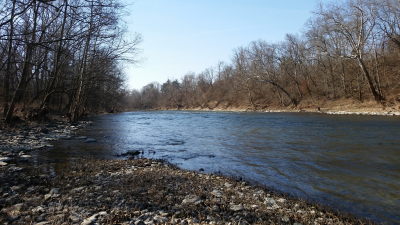
Adventure in the Deoderant Aisle

I'm shopping with my neighbor, coupons in hand, trying to find deodorant.
We have come to an imposing wall, bricked with an astonishing and confusing array of little plastic objects. We need to find the one that matches the picture on the coupon.
As she is deeply absorbed in this task, I step back a moment to take in the scene. I wonder how this would look, 1000 years from now, to future archaeologists. They keep finding all these containers. Boxes and bottles and tubes and plastic shells of every size and color and shape, for soft soap, toothpaste, cat food, yogurt, granola bars, batteries, olive oil, paint thinner, applesauce, weed killer, coffee creamer, shampoo, cough syrup, catsup, bbq sauce, screw drivers, dishwasher soap, toothpaste, deodorant...containers for every imaginable substance.
And they are everywhere.
It will be obvious that an enormous amount of effort, technology and inventiveness went into the design of these containers. Each one is a little piece of artwork emblazoned with logos and clever captions on colorful labels that cling to the container with ferocious tenacity. And the materials - artfully folded cardboard, sturdy cans, gracefully molded cups and shells and bottles from glass and clear thin plastic that is incredibly strong and practically indestructible.
Think of the deodorant container. What was involved in bringing this object to life? It didn't just fall off a tree - it's substance began as crude oil deep in the earth and through some magical transformation became this pale blue rounded cylinder covered with flowers and words and containing a little dab of aromatic wax.
How many people and industries were were involved in this project? I can speculate about an oil well, a refinery, a plastic manufacturing plant, a cosmetics laboratory, an office building housing advertising and marketing departments, a warehouse, a shipping company, a truck driver, and finally a store employee moving each one from a large cardboard box to take its place in a perfect little row on the grocery store shelf.
All these containers have very brief lives. The little dab of aromatic wax only lasts a short while, and then it is supposed to be Thrown Away. Disposed of. Hauled off to the landfill.
Like the historian confronted with piles of skulls from Aztec sacrifices, these folks from the future will scratch their heads and try to figure out what crazy logic was behind this bizarre activity.
They might wonder, what exactly is deodorant, anyway, that it deserves this vast industry?
I mentally removed the entire collection of containers and replaced it with a bin of baking soda, since that's what I use instead. Suddenly, a million people are out of work. Whatever would we do without this completely fictitious industry? I snap out of my reverie because my neighbor has found her deodorant. Now it's on to the Great Wall of Toothpaste.
I Live in a Space Station
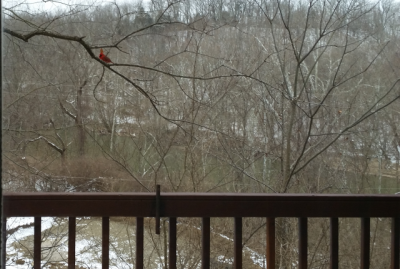
It was warm enough to sit on the deck this morning. I drank my tea and listened to the astounding, piercing bird calls.
Being outside is like taking a space walk. I am ready to go back in after a few minutes.
Inside my space station, I have heat and carpet and computers to play with and hot water for tea - the station has everything to take care of me. Out in 'space', the world goes by oblivious to me and my little comforts.
This world is for everybody - birds and foxes and trees. Does that include me? Or, am I a visitor from somewhere else who needs a space station to survive in?
Yet I know that's not the only way to live. Right here, along this same riverbank, people once lived without the benefit of space stations. They lived outside, in the world. They knew things that we don't.
I recently learned about 'Ishi', the 'last stone age American', who managed to survive a massacre of his entire tribe during the gold rush in California and live to tell his story to the modern world. And, it's an amazing story,
What interests me is the skills that Ishi demonstrated to his anthropologist friends. He showed them how to find plants to eat, buildt shelters and carve bows and arrows.
The book can be found on Amazon:
Ishi in Two Worlds: A Biography of the last Wild Indian in North America
While I air out my toes on my chilly deck, I understand why I need to live in this space station. Although I know many amazing things, from how to find lettuce in the grocery aisle to how to get this post to appear on the Internet, I don't know how to live outside in the world.
→ Next


 We have a new addition to our household. A plant. Or rather a collection of them nestled in a pot together.
We have a new addition to our household. A plant. Or rather a collection of them nestled in a pot together.
 Last spring, I was thrilled to find two baby deer nibbling my yard. They were white with brown spots and looked fragile and elegant.
Last spring, I was thrilled to find two baby deer nibbling my yard. They were white with brown spots and looked fragile and elegant.
 I just ate a whole avocado. I only meant to eat half, but it was so good and they are better fresh. Unfortunately, I forgot to take a photo before I ate it.But that’s no problem – I went to the Internet and found this picture on “californiaavocado.com”.
I just ate a whole avocado. I only meant to eat half, but it was so good and they are better fresh. Unfortunately, I forgot to take a photo before I ate it.But that’s no problem – I went to the Internet and found this picture on “californiaavocado.com”.
 Does it strike you as odd that in the middle of a suburban neighborhood there would be a Holiday Inn for vultures?
Does it strike you as odd that in the middle of a suburban neighborhood there would be a Holiday Inn for vultures?
 Now that winter is over, all sorts of green things are shooting up in my yard.
Now that winter is over, all sorts of green things are shooting up in my yard.









 Yes, acorn brownies. The idea came from a book:
Yes, acorn brownies. The idea came from a book:

 Walking about my neighborhood, I spot food growing everywhere.
Walking about my neighborhood, I spot food growing everywhere.

 I seem to be surrounded by running water.
I seem to be surrounded by running water.

 I'm shopping with my neighbor, coupons in hand, trying to find deodorant.
I'm shopping with my neighbor, coupons in hand, trying to find deodorant.
 It was warm enough to sit on the deck this morning. I drank my tea and listened to the astounding, piercing bird calls.
It was warm enough to sit on the deck this morning. I drank my tea and listened to the astounding, piercing bird calls.